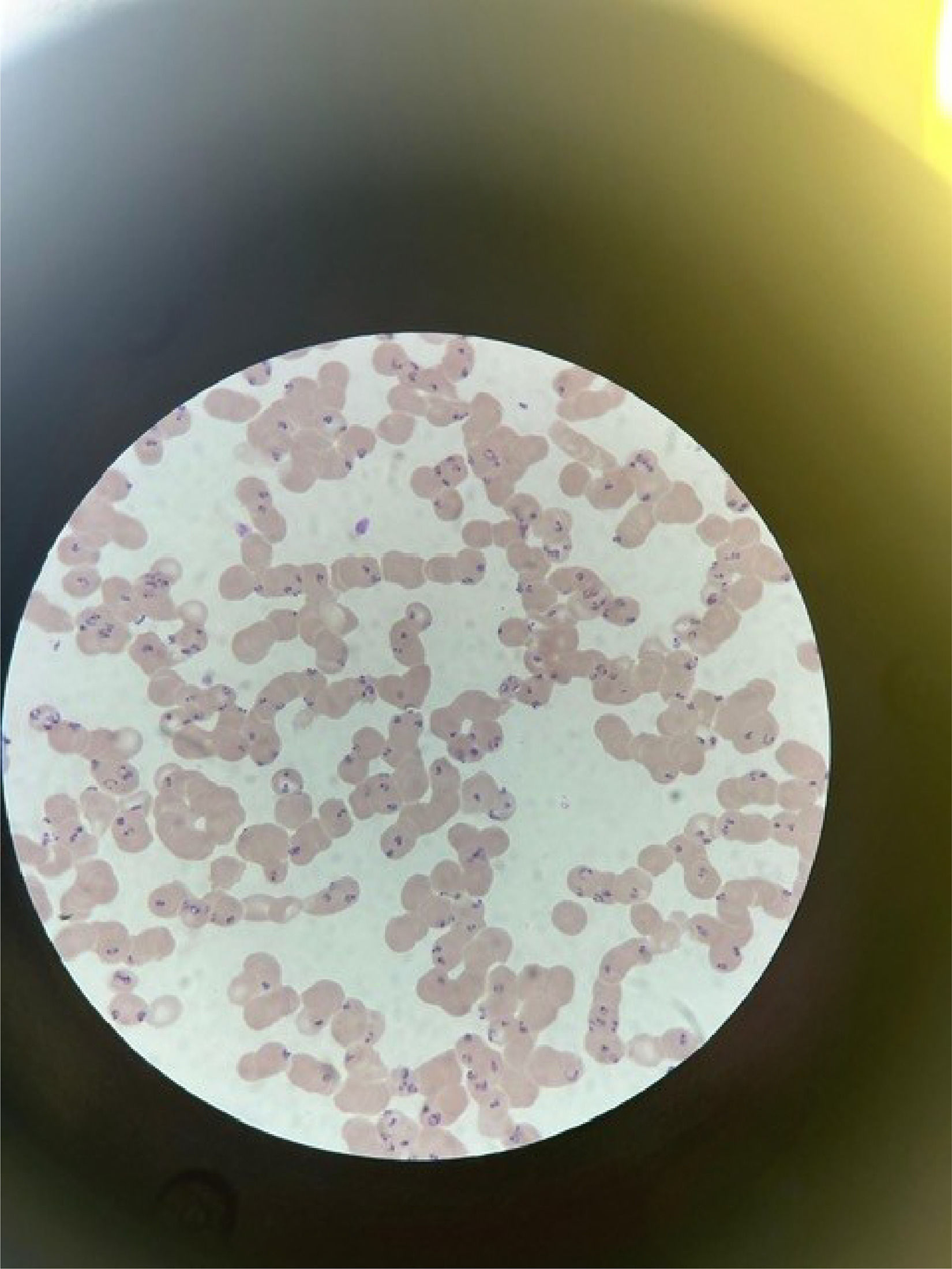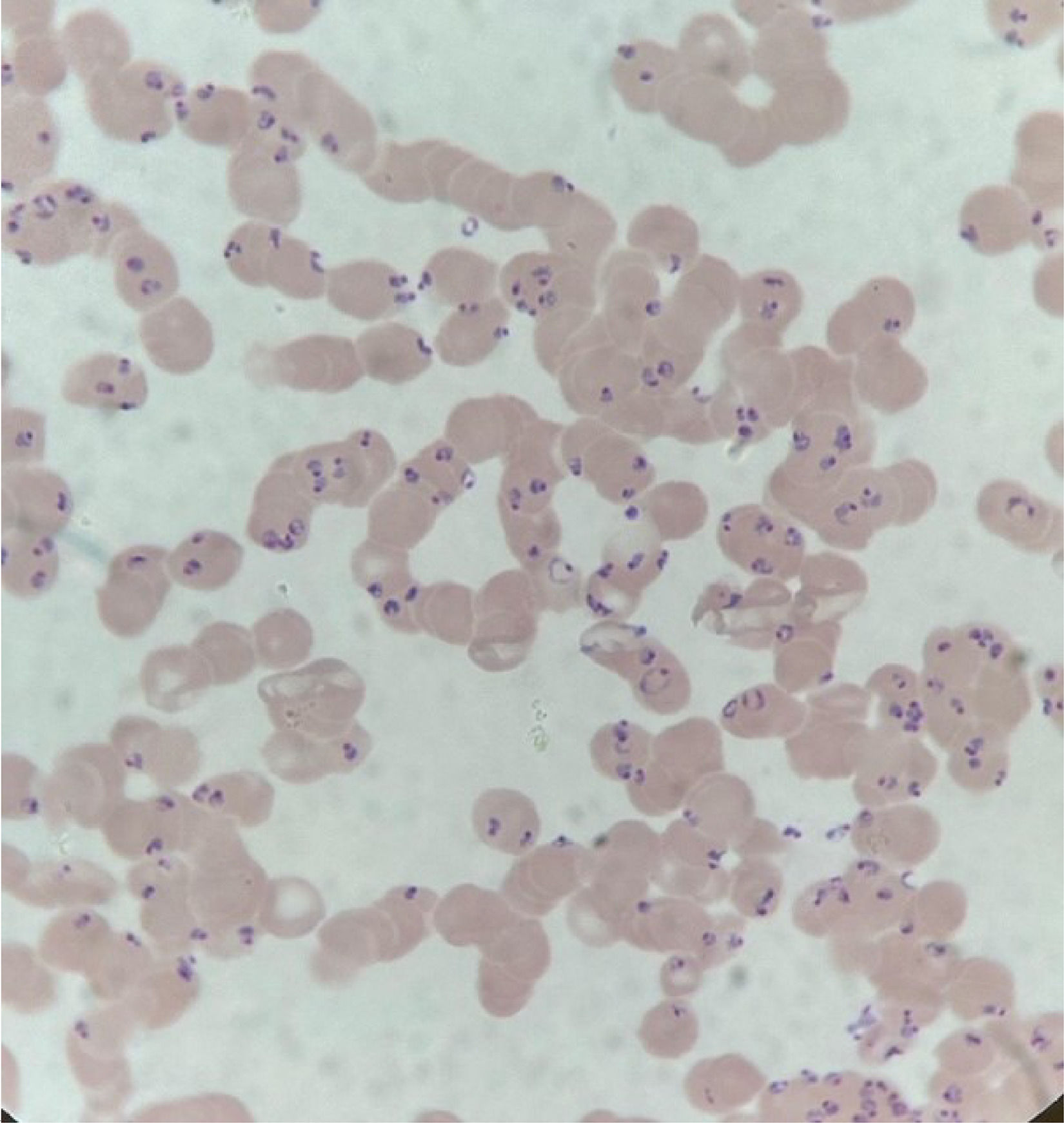
Hematology Specialist Association 18. National Congress
More infoMalaria is a potentially fatal condition caused by parasites that are spread to humans through the bites of infected female Anopheles mosquitoes, according to the World Health Organization (WHO). Two parasite species, Plasmodium falciparum and Plasmodium vivax, are the most significant threats globally, both known to be infectious to humans. Hematological changes are the most frequent consequences of malaria and have a significant impact on the pathophysiology of the disease. Changes in platelet parameters are considered a hallmark of malaria infection. Often, these changes in malaria infection may be a result of higher levels of parasitemia. Thrombocytopenia is frequently observed in malaria infection. This report presents a case of malaria as a rare cause in a patient investigated for thrombocytopenia.
Case ReportA 34-year-old male patient with no known medical history presented to the emergency department with complaints of fever, chills, and rigors. Upon admission, his lab results showed wbc: 3,2 thousand/ul, hgb:13.2 gr/dl, neutrophils: 2400, plt:12 thousand/ul, CRP: 232 mg/dl, creatinine: 0.9 mg/dl, AST: 100 u/l, total bilirubin: 2.7 mg/dl, ALT: 66 u/l. The patient was a sailor and had recently returned from the Ecuador Gine region 15 days ago. He had also stayed in Ghana for 40 days prior to that. The patient had taken prophylactic medication for malaria once. Physical examination revealed abdominal tenderness and fever. Peripheral blood smear evaluation revealed widespread ring forms (Figure 1). Following consultation with microbiology, the patient was diagnosed with malaria. The health authority was notified, artemether + lumefantrine medication was procured and the patient was referred to the tertiary care facility. It was later learned that the patient started IV treatment for malaria, but his condition deteriorated, he was intubated and subsequently expired.
DiscussionMalaria remains a global public health concern considering the number of cases and death rate worldwide. Changes in platelet parameters are considered a hallmark of malaria infection, and often these changes in malaria infection may be a result of higher levels of parasitemia. Studies have shown that the median platelet count was significantly decreased in adult patients with malaria compared to apparently healthy individuals. Thrombocytopenia is one of the most frequent complications of malaria infection, though it is not a criterion for severe malaria, and it is commonly observed in both Plasmodium vivax and Plasmodium falciparum malaria. Previous studies have shown a correlation between parasite density and the severity of malaria infection complications. There is uncertainty regarding the degree of platelet parameter changes that occur during malaria infection and the underlying biological mechanisms associated with parasitemia levels. The speculated mechanisms leading to thrombocytopenia include coagulation disturbances, splenomegaly, bone marrow alterations, antibody-mediated platelet destruction, oxidative stress, and the role of platelets as cofactors in triggering severe malaria. There is no clear recommendation for the adequate management of these hematological complications. It is essential to consider thrombocytopenia and changes in platelet parameters in malaria patients. This report also highlights the need for further research on the subject.








